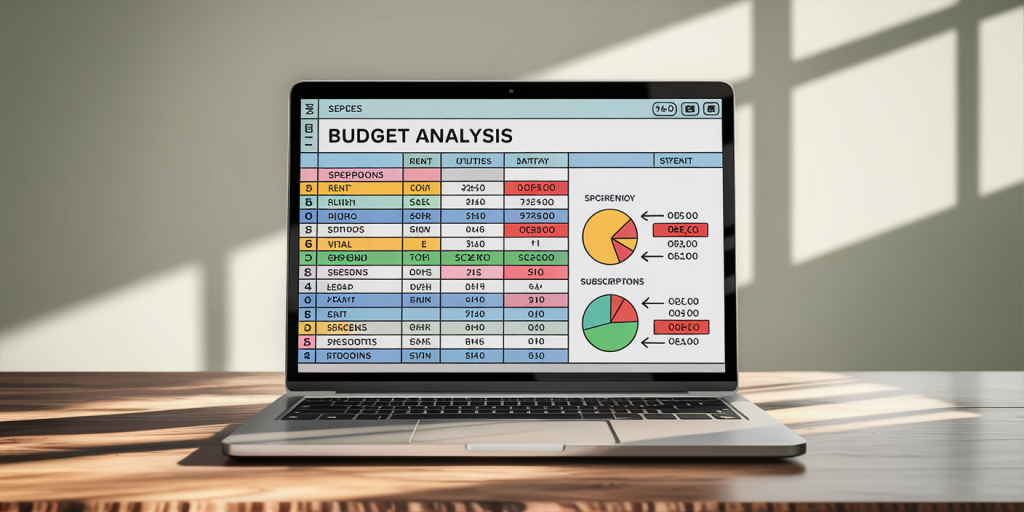How to Do a Monthly Money Review (And Why It Matters)
Managing personal finances effectively is essential for achieving long-term financial stability and growth. A monthly money review is a powerful tool that helps individuals track spending habits, understand income sources, and adjust financial goals accordingly. This systematic evaluation ensures that you stay on top of your financial health, avoid unnecessary debt, and maximize savings opportunities. This article explores practical strategies for conducting monthly money reviews and highlights their importance through data-driven insights and practical examples.

Why Conducting a Monthly Money Review is Crucial
Financial literacy research consistently demonstrates that individuals who actively monitor their finances are more likely to save regularly, avoid debt, and build wealth. According to a 2022 survey by the National Endowment for Financial Education, 70% of adults who review their budgets monthly report feeling in control of their money, compared to only 35% of those who do not.
One key reason monthly reviews matter is that they enable real-time adjustments to your financial plan. Unlike annual reviews, which may overlook short-term fluctuations, monthly assessments provide the agility to respond promptly to changes such as unexpected expenses or new income streams. This proactive management reduces financial stress and supports better decision-making.
Moreover, monthly reviews illuminate patterns that may go unnoticed. For example, recurring subscriptions or impulse purchases can accumulate unnoticed, resulting in wasted funds. Identifying these trends early through regular evaluations empowers you to cut unnecessary costs and allocate resources toward priorities like emergency funds or retirement savings.
Preparing for Your Monthly Money Review
Before diving into the review process, it’s essential to gather key financial documents. These typically include bank statements, credit card bills, paychecks, and receipts for variable expenses such as utilities, groceries, or entertainment. Many personal finance apps, like Mint or YNAB (You Need A Budget), facilitate the aggregation of this information, saving time and enhancing accuracy.
To illustrate, consider Sarah, a mid-level marketing professional who recently started conducting monthly reviews using digital tools. She collects all relevant statements on the last day of the month and uploads them into her budgeting app. Over three months, Sarah observed that her streaming subscriptions cost her approximately $40 monthly, which she decided to reduce by canceling one inactive service, redirecting those funds to her savings account.
Additionally, establish a dedicated time slot each month—preferably the same day—to perform your review. This consistency transforms money management from a sporadic task to a habitual practice. Scheduling 30 to 60 minutes each month reduces oversight and increases the likelihood of sticking with the routine.
Step-by-Step Process to Conduct a Monthly Money Review
1. Track Income and Expenses
Begin by listing all sources of income, including salaries, freelance earnings, dividends, and any side hustles. Next, categorize your expenses into fixed (e.g., rent, utilities) and variable (e.g., dining out, shopping) categories. This breakdown reveals where your money flows and helps identify areas for optimization.
A comparative example is shown below:
| Category | Budgeted Amount | Actual Amount | Difference |
|---|---|---|---|
| Rent/Mortgage | $1,200 | $1,200 | $0 |
| Utilities | $150 | $180 | +$30 |
| Groceries | $400 | $450 | +$50 |
| Entertainment | $100 | $80 | -$20 |
| Subscriptions | $50 | $70 | +$20 |
This table clearly shows that utilities and groceries went over budget by $30 and $50 respectively, signaling a need to identify the causes and reduce spending in the next cycle.
2. Review and Reconcile Bank Statements
Cross-reference your recorded expenses with bank and credit card statements to ensure no transactions are missed or miscategorized. This step prevents oversight of unauthorized charges or errors and ensures the accuracy of your budget data.
For example, a recent study in the Journal of Financial Planning found that 23% of financial review participants caught errors or fraudulent transactions during monthly reconciliations, saving thousands in potential losses.
3. Evaluate Progress Towards Financial Goals
Use the insights from the previous steps to assess how well you are progressing with your short- and long-term goals. Whether paying down debt, building an emergency fund, or saving for a vacation, monthly reviews provide measurable checkpoints.
John, a software engineer, set a goal to save $5,000 within a year for a home down payment. During his monthly reviews, he tracked his contributions and realized a slower pace initially. By adjusting his discretionary spending and increasing monthly savings by $200, John was able to meet his target ahead of schedule.
4. Identify Behavioral Patterns and Adjust Accordingly
Monthly reviews offer an opportunity to reflect on spending behaviors. Are you dining out more than planned? Is impulse shopping creeping in? Observing these trends allows adjustment of habits proactively rather than reacting after overspending.
Research from the American Psychological Association shows that having a clear understanding of spending habits reduces impulsive purchases by 40%, suggesting that monthly reviews contribute to better financial discipline and emotional well-being.
Tools and Techniques to Enhance Monthly Money Reviews
Leveraging modern technology simplifies the review process. Budgeting apps like PocketGuard, EveryDollar, and Goodbudget offer customizable dashboards, alerts, and analytics that assist in tracking finances effortlessly. Automation features allow for categorization and comparison with prior months to detect trends.
For those preferring traditional methods, spreadsheets remain effective. Microsoft Excel and Google Sheets offer templates designed for budgets, allowing for customization and control over data management. Users can create pivot tables and charts to visualize spending and income fluctuations easily.
Moreover, incorporating visual aids such as pie charts or trend graphs during monthly reviews helps capture complex data succinctly. This approach was evident in a 2023 consumer finance report where visually supported budgets enhanced understanding and motivation among users by 55%.
Case Study: How A Monthly Money Review Transformed a Family’s Budget
The Johnson family, consisting of two parents and two children, struggled for years with managing their monthly expenses. Their difficulty was primarily due to inconsistent tracking and unplanned spending. In 2021, they adopted the practice of monthly money reviews using a combination of paper logs and budgeting software.

Within six months, the family identified recurring expenses that could be reduced, such as subscription services and dining out frequency. They also found that utility bills increased during summer months because of air conditioning use. By adjusting thermostat settings and installing energy-efficient appliances, they reduced utility costs by 15% annually.
Their monthly review process involved gathering receipts, reconciling statements, and discussing financial goals at the end of each month. This collective approach promoted awareness among all family members, making budgeting a shared responsibility and teaching their children money management skills.
As a result, the Johnsons paid off $12,000 in credit card debt, created a $10,000 emergency fund, and planned for a family vacation, all within the course of a year. Their experience highlights the transformative power of consistent money reviews.
Future Perspectives: Trends in Personal Financial Management

The future of money management is increasingly digital and personalized. Artificial intelligence and machine learning are revolutionizing the way monthly money reviews are conducted. Emerging technologies offer predictive analytics that can forecast spending trends and provide tailored recommendations.
For instance, banks and fintech companies are innovating with apps that synchronize users’ financial data and offer real-time feedback, helping mitigate overspending before it occurs. A 2023 report by Deloitte forecasted that by 2025, over 60% of consumers would rely on AI-powered financial advisors for budgeting and financial planning.
Additionally, advancements in behavioral finance tools aim to integrate emotional and psychological metrics into budgeting strategies. These innovations intend to create more holistic reviews that account for stress, motivation, and spending triggers, promoting more sustainable money management habits.
Socially, financial education and awareness are expected to continue rising, supported by increased availability of online courses, workshops, and community programs. Governments and private organizations recognize that monthly money reviews are a fundamental habit that improves financial resilience and overall economic well-being.
By embracing these trends and continuing the discipline of monthly reviews, individuals can navigate an increasingly complex financial landscape with greater confidence and success.
In summary, performing a monthly money review is a strategic practice that empowers you to take control of your finances. Through consistent tracking, reconciling, and adjusting, you build a clearer picture of your financial situation, enabling informed decisions and progress towards your goals. Whether using technology or manual methods, incorporating this routine sets a solid foundation for financial stability and growth. Future tools will likely make this process even more accessible and insightful, further solidifying the monthly money review’s role in effective personal financial management.
